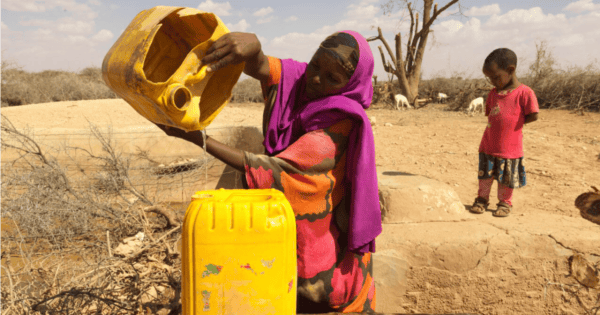
In the small village of Qorijabley, I watch Maryan Axmed tend to one of her last goats as it takes its last breaths and died. It is so symbolic in a way – of the desperate situation facing millions across East Africa and how time is quickly running out.
Maryan is stoic, yet she tells me, “it makes me feel so sad because it is my livelihood” as her baby also cries with hunger.
Before this devastating drought, Maryan’s family had 50 goats and sheep. Now only a handful of sick goats remain. “It’s so difficult. Once these goats are gone I will have nothing,” she says.
Maryan’s sister Sarah has just one weak sheep left alive from 80 before the drought began. “How will I feed my six daughters? I’m worried about whether they will live, or die like these animals.”
Sarah’s family has no food left at all. She is relying on the generosity of her relatives and neighbours to feed her children. They managed to borrow a small cup of rice. It will be the only meal the six children will eat that day.
Water dries up fast.
In the burning sun, it takes Sarah an hour to fetch the only water near her village. The well is green and polluted.
Outbreaks of cholera and acute diarrhoea are becoming more frequent in Somalia and other areas in East Africa, increasing the risk of death on a large scale.
My Somali Red Crescent colleagues are providing water purification tablets and filters to help prevent children from becoming sick after drinking contaminated water.
A Red Crescent volunteer helps Sarah to carry the heavy water container on the hot walk back to her thatched home.



